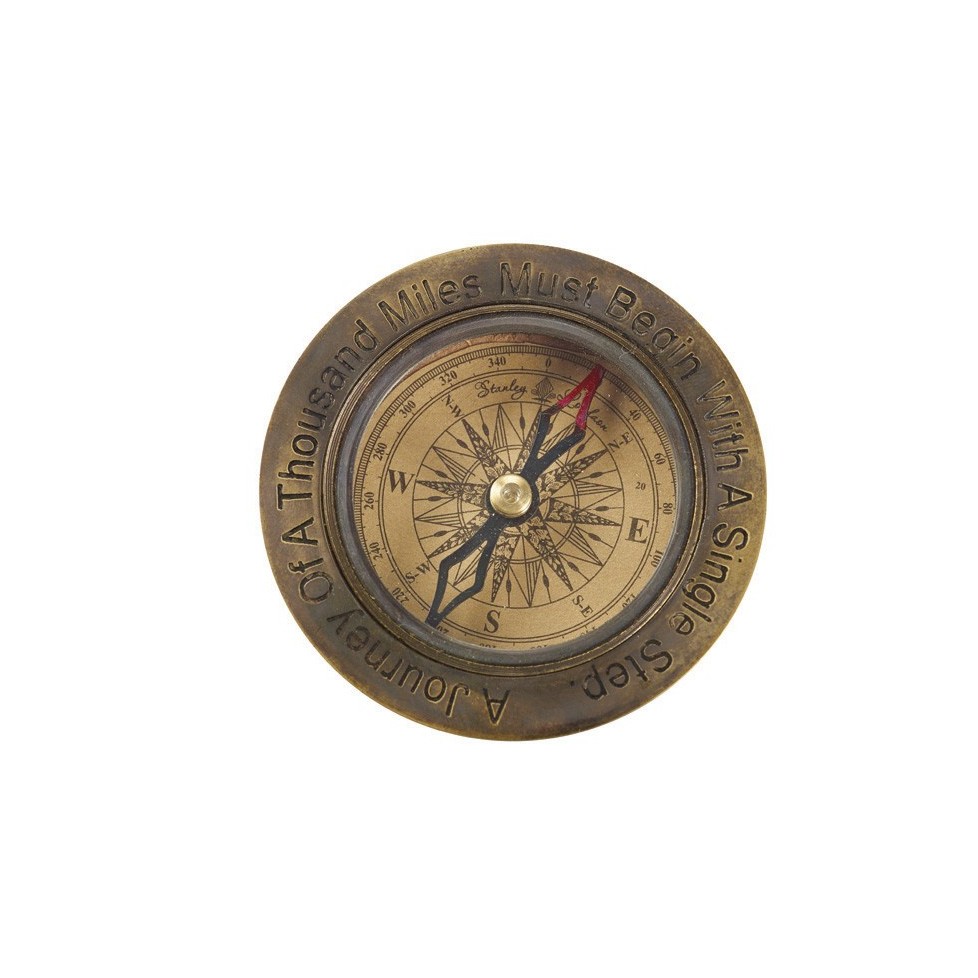

| Los pedidos realizados el día 25 de Julio, se procesarán el día 26 por fiesta local. |



Antiqued brass compass with lovely compass rose. Comes with navy blue velvet bag.
NAUTICAL COMPASS.
The compass (from the Latin "passus" ("step")) opened up the world to exploration and discovery. The principle of the magnetic needle was already known to the Chinese in the 3rd century BC and was first used by feng shui priests to tell them where and how to build. It was adapted to maritime navigation by Chinese sailors around the year 1000. The first compasses comprised a magnetic needle floating in a bowl of water, with the needle suspended on a thread or threaded through a reed. The Arabs perfected this by mounting the needle on a pivot. The compass arrived in Europe between the 10th and 11th centuries, enabling sailers to cross the oceans and explorers to discover the continents. The first instrument to resemble the modern compass is attributed to Portuguese citizen Ferrande (1483).
Antiqued brass compass with lovely compass rose. Comes with navy blue velvet bag.
Wooden wall clock with a nautical design of a windrose. It works with a AA battery which is not included.
SHIP'S WHEEL CLOCK. Nautical clock with international flags that decorate the dial, made in brass.
Original decorative clock mounted on a vintage style wooden propeller.
Nautical style wooden clock decorated with three marine fish. It is made of MDF and printed paper. It works with 1 AA battery which is not included.
Original pendulum table clock in the shape of a beach hut. Give your home a touch of the coast with this exclusive clock. It is made of wood and handcrafted in Spain. A drawing of fun feet with flip flops is printed on the pendulum. This is a gift idea for those in love with the sea and the beach. It works with one AA battery (not included) that can be...
Elegant nautical-inspired compass made of zinc alloy. Its lid is decorated with an intricate design and the bottom has a compass rose printed on it. This nautical piece is an original gift idea, an instrument with which directions were determined at open sea.